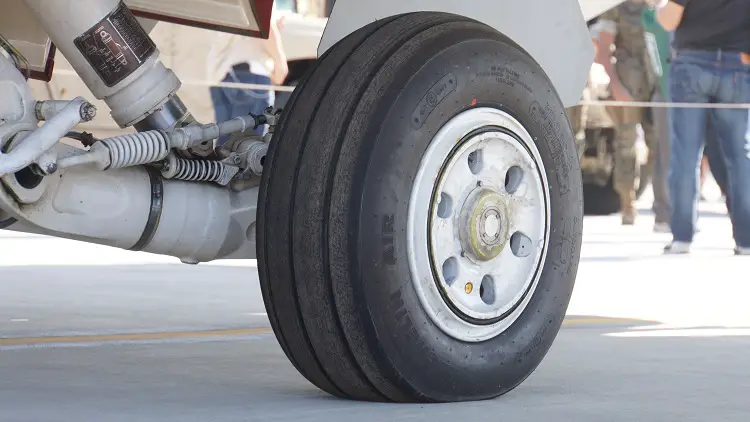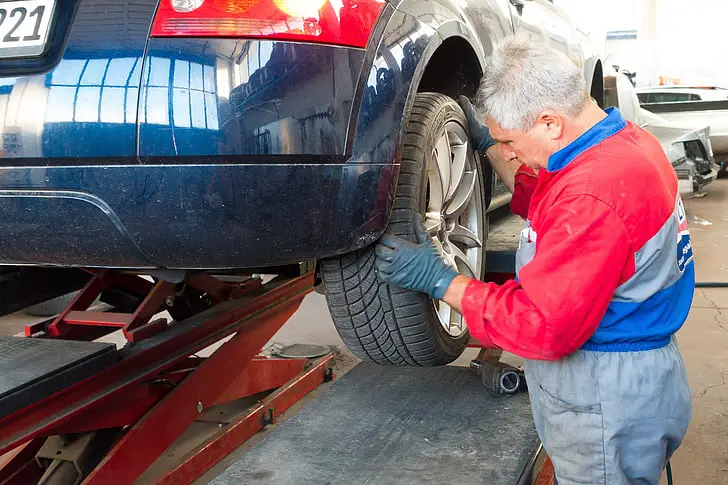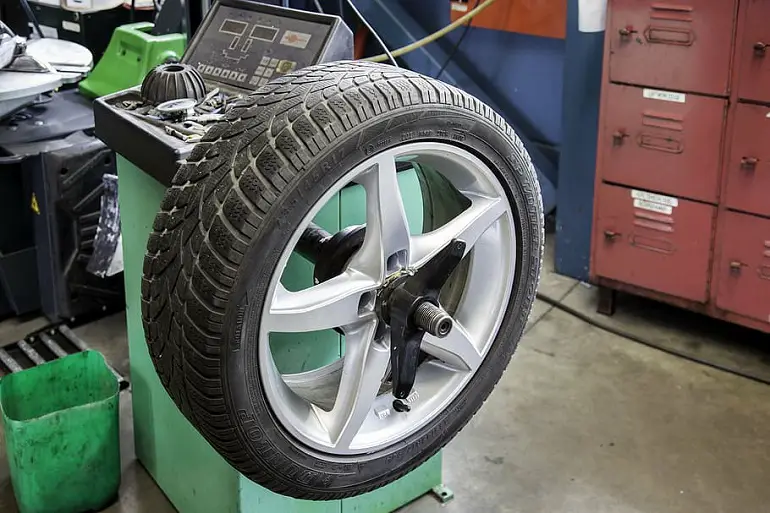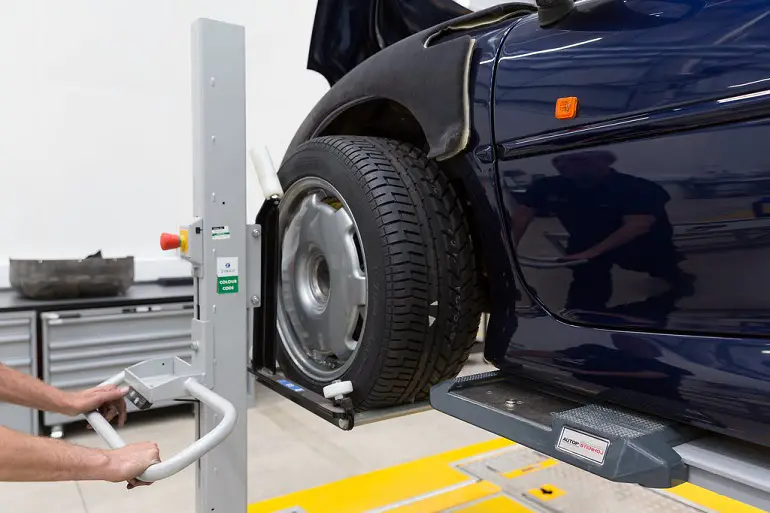In this comprehensive guide, we will delve into the process of balancing tires to ensure optimal performance and safety for your vehicle. Tire balancing is essential for minimizing vibrations, promoting even tire wear, and maintaining proper handling.
Whether you are a seasoned driver or new to the topic, this article will provide valuable insights and step-by-step instructions on tire balancing techniques.
From understanding the importance of tire balance to exploring DIY methods and seeking professional assistance, we will cover everything you need to know to achieve and maintain balanced tires.
What is Tire Balancing?
Tire balancing is a fundamental process that involves equalizing the weight distribution of a tire and wheel assembly. It aims to eliminate any imbalances that can lead to vibrations, uneven tread wear, and compromised vehicle handling.
By ensuring proper tire balance, you can enhance your driving experience, prolong tire lifespan, and maintain optimum safety on the road.
In the next section, we will explore the intricacies of tire balancing and its significance in maintaining a smooth and stable ride.

Why Do Tires Need Balancing?
Tires need balancing to ensure an even distribution of weight around the wheel and tire assembly. Imbalanced tires can occur due to factors such as tire wear, wheel damage, mounting and dismounting procedures, tire changes, missing wheel weights, road hazards, and maintenance neglect.
Balancing tires eliminates vibrations, enhances vehicle stability, improves tire lifespan, and promotes a smoother and safer driving experience.
How Do Tires Get Out of Balance?
Tires can become unbalanced due to various factors, including normal wear and tear, road conditions, and maintenance practices. Understanding the reasons behind tire imbalance can help you take preventive measures.
Here are some common factors that contribute to tires getting out of balance:
Tire Wear
As tires age and accumulate mileage, the distribution of wheel weight can change. The tread can wear unevenly, causing imbalances and affecting the overall balance of the wheel-tire assembly.
Wheel Damage
Any damage to the wheels, such as dents, bends, or misalignment, can disrupt the balance. Even a slight distortion in the wheel’s shape can lead to imbalances and vibrations.
Mounting and Dismounting
Improper mounting or dismounting of tires can introduce imbalances. If the tire is not seated correctly on the wheel during installation or removal, it may result in an uneven distribution of weight.
Tire Changes
Whenever you install new tires or switch tires between wheels, the balance can be affected. Different tires have varying weight distributions, and not properly rebalancing them during these changes can result in imbalances.
Wheel Weights
Over time, the adhesive or clips that hold the wheel weights in place can deteriorate, causing them to shift or fall off. Missing or loose wheel weights can lead to imbalances in the wheel-tire assembly.

Road Hazards
Hitting potholes, curbs, or other road hazards can cause sudden impacts that affect the balance of the tires. These impacts can lead to wheel or tire damage, resulting in imbalances.
Maintenance Neglect
Failure to regularly inspect and maintain your tires can contribute to imbalances. Neglecting tire rotations, proper inflation, and wheel alignment adjustments can exacerbate imbalances over time.
To minimize the chances of tires getting out of balance, it’s important to practice regular tire maintenance, promptly address any wheel or tire damage, and have your tires professionally balanced when necessary.
By staying proactive and attentive to your tires’ condition, you can prevent imbalances and ensure a smoother and safer driving experience.
Signs You Need Your Tires Balanced
Recognizing the signs that indicate your tires need balancing is crucial for maintaining optimal vehicle performance and safety. Here are some common indicators that it’s time to balance your tires:
Vibrations
If you feel vibrations in the steering wheel, seat, or floorboard, particularly at certain speeds, it’s a clear sign of potential tire imbalance. These vibrations may intensify as you accelerate.
Uneven Tire Wear
Check your tires for uneven wear patterns. If you notice excessive wear on specific areas, such as the inner or outer edges, it’s likely due to an imbalance issue. Uneven tire wear can lead to premature tire replacement and compromised performance.

Steering Wheel Vibrations
If your steering wheel vibrates, especially when driving at higher speeds or during braking, it’s an indication that tire balancing may be needed. Pay attention to any unusual feedback or shaking through the steering wheel.
Vehicle Pulling
If your vehicle tends to pull or drift to one side without any input from you, it could be a sign of tire imbalance. This pulling effect may be more noticeable when driving on a straight road or when alternating between different road surfaces.
Excessive Tire Noise
Unbalanced tires can generate excessive noise, such as humming or roaring sounds, especially at higher speeds. If you notice a significant increase in tire noise, it’s worth considering tire balancing as a potential solution.
Wheel Weights Missing or Damaged
Inspect your wheels and check for missing or damaged wheel weights. These weights are crucial for maintaining tire balance, and their absence or damage can lead to imbalances and related symptoms.
Previous Tire Service or Replacement
If you recently had tire-related services, such as tire rotation, replacement, or repairs, it’s essential to ensure you have properly balanced tires. Any changes made to the tires or wheels can affect the balance and require readjustment.
If you observe any of these signs, it is advisable to have your tires professionally balanced as soon as possible. Regular tire balancing helps maintain a smooth and comfortable ride, prevents uneven tire wear, and promotes overall vehicle safety.
Consulting a trusted tire professional will ensure accurate balancing and address any underlying issues that may be causing the imbalance.
How Long Can You Drive on Unbalanced Tires?
Driving on unbalanced tires is not recommended for an extended period. While it is possible to drive on unbalanced tires for a short distance without immediate consequences, it’s crucial to address the issue promptly.
Here are some points to consider:
Increased Vibrations: Unbalanced tires can cause vibrations, which can be uncomfortable for the driver and passengers. These vibrations may become more pronounced as the speed increases. Prolonged exposure to these vibrations can lead to driver fatigue and discomfort.
Uneven Tire Wear: Continued driving on unbalanced tires can result in uneven wear patterns. The imbalances place additional stress on certain areas of the tires, causing them to wear more quickly and unevenly. This can significantly reduce the lifespan of the tires, requiring premature replacement.
Handling and Performance Issues: Unbalanced tires can affect the vehicle’s handling and performance. The imbalances can lead to steering instability, reduced traction, and compromised braking performance. These issues can impact your ability to control the vehicle effectively, especially in emergency situations.
Suspension and Wheel Components: Extended driving on unbalanced tires can put additional strain on the suspension and wheel components. The vibrations and uneven forces generated by the imbalances can accelerate wear and potentially damage critical parts of the suspension system, wheel bearings, and other components.
While it is difficult to determine an exact mileage limit for driving on unbalanced tires, it is generally recommended to address the issue as soon as possible.
Even if you experience minimal symptoms or notice slight imbalances, it’s essential to have your tires balanced at the earliest opportunity to prevent further damage and ensure optimal performance and safety.

FAQs
1. How much does tire balancing cost?
Tire balancing costs can range from $10 to $20 per tire on average. Prices may vary depending on the service provider and any additional services required.
2. What is the best tire balancing method?
The best tire balancing method depends on factors such as the vehicle, tire construction, and personal preference. Common methods include standard spin balancing, road force balancing, and match-mounting. The most common types of wheel balancing are match and dynamic balancing.
Consult with a professional tire technician to determine the most suitable method for your needs.
Final Thought
In conclusion, tire balancing is an essential maintenance task that ensures a smooth and safe driving experience. By addressing imbalances promptly, you can prevent uneven wear, vibrations, and potential damage to your vehicle.
Prioritizing tire balancing contributes to optimal performance, extended tire life, and increased overall safety on the road.


